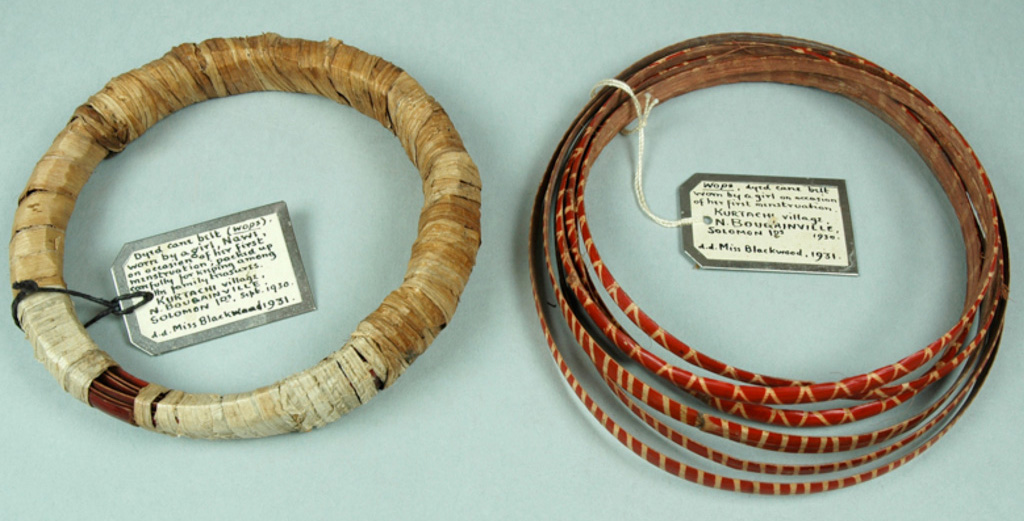Cane belts
Bougainville Island, Papua New Guinea
 Collected by Beatrice Blackwood in 1930 and donated by her in 1931; 1931.86.257–.258Girls wore these slim, dyed-red cane belts during their first menstruation period. The belt on the right appears as it would have when worn, the transverse linear design (revealing yellow dashes of the cane's natural colour) produced by winding cord round the cane before dyeing. The one on the left has been wrapped in plant leaf for safekeeping with other family treasures, indicating that the occasion is regarded as an important and positive one in the girl's life.
Collected by Beatrice Blackwood in 1930 and donated by her in 1931; 1931.86.257–.258Girls wore these slim, dyed-red cane belts during their first menstruation period. The belt on the right appears as it would have when worn, the transverse linear design (revealing yellow dashes of the cane's natural colour) produced by winding cord round the cane before dyeing. The one on the left has been wrapped in plant leaf for safekeeping with other family treasures, indicating that the occasion is regarded as an important and positive one in the girl's life.
Menstruation governs various cultural and religious activities throughout the world, often with negative connotations, although some rules are observed less now than in the past. Traditionally women of the Christian Orthodox Church should abstain from Communion during menstruation; Hindu women may not take part in religious ceremonies, mount a horse or drive a car for the first four days of her cycle; Muslim men are advised to avoid women during menstruation, and in both Islam and Judaism, the end of the menstrual period is celebrated with ritual washing and 'purification'. Some cultural groups still limit the activities that a menstruating woman can perform, such as cooking or intercourse, and among the Dogon people of Mali in Africa, women must isolate themselves completely from society in a 'menstrual hut'. Others associate menstrual blood with evil forces: the Mae Enga people of Highland New Guinea believe that contact with menstrual blood may cause a man to vomit, lose his wits, or even suffer a slow death.
